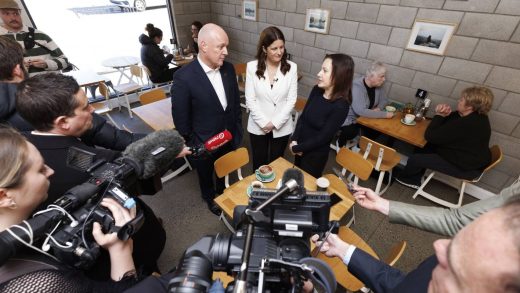
Michelle McCormick is the policy director for Infrastructure NZ.
OPINION: The sheer scale and force of the rain across the top of the North Island over the past few weeks has been unprecedented, but it’s something we, along with our infrastructure, need to get used to and be ready for.
In Auckland, motorways, busways and suburban streets were inundated by raging torrents of water, as the city’s existing infrastructure struggled to cope on Friday, January 27, with more than 150mm of rain in just 3 hours.
The average rainfall amount for the whole of January is usually around 60-70mm. Setting a new all-time record, this year 539mm of rain was recorded for the month.
What’s important to note here is that our ageing infrastructure was mostly built for a climate of more than 50 years ago, before things started to change so dramatically.
READ MORE:
* Floods are inevitable. Flood disasters are not
* Will Auckland’s giant new wastewater tunnel reduce flooding?
* We’ve paved paradise, how do we let the water out?
There seems little debate that extreme weather events once unimaginable will now be happening with much more frequency.
Shockingly, lives have been lost, homes destroyed, our new normal is here, climate change has arrived at our doorstep, and revealed how vulnerable our infrastructure really is.
It’s clear those planning and building infrastructure need to up their game and adapt to our new environment. The time to look at how we mitigate future disasters of this type is now. Climate change is no longer something that will happen in the future, there are serious discussions to be had and tough problems to solve.
BRADEN FASTIER / STUFF
Severe flood damage in Nelson in 2022 saw much of the region’s drainage infrastructure overwhelmed, leading to slips and inundation of houses.
Infrastructure that was appropriate decades ago is not working. The culverts which channel water through or around obstacles in our suburbs were simply not built to take the massive volumes of water like we have seen recently.
We need to build back better; every time infrastructure is replaced or built new, it should be designed with climate change and sustainable development in mind. This must be top of our list, not simply an afterthought.
We as a country have to be more deliberate in addressing the impacts of climate change and the opportunities for Aotearoa to build greater resilience and sustainability.
We must have much greener, more permeable environments with more porous surfaces within our urban areas.
Supplied
A Christchurch roadside planted with vegetation to help absorb heavy rainfall and ease the flooding risk.
Overseas, and in some of our newer developments, infrastructure is increasingly being built to sponge up heavy rainfall so nature can absorb it.
This means less concrete around our roads and more designs like grass swales – shallow channels with gently sloping grassy sides which manage water runoff, filter pollutants and increase rainwater infiltration.
It is easier to include climate change-friendly design when constructing new developments. The more challenging question is how do we retrofit ageing infrastructure in our existing communities with better, greener designs which will help us in future floods.
The cost of infrastructure is high and without even considering the recent damage caused by the floods, decades of underinvestment in the industry have left us with a significant infrastructure deficit – around $210 billion worth.
Watercare/Supplied
Big infrastructure projects come with massive bills, such as a $400m water transmission pipeline in Auckland, pictured under construction.
We will need to spend more money on emergency works and reinstatement than we had planned this year, and this is on top of all the new infrastructure planned that we already need.
Fundamentally, our current approach to funding and financing infrastructure is not working.
Today, we are spending around 5.5% of New Zealand’s GDP on building public infrastructure. To meet the identified infrastructure deficit, this would need to increase to nearly 10% of GDP, or $31b annually.
We must spend what public money we have wisely, otherwise individuals and businesses will continue to wear the cost of wild weather events. But it’s just not feasible that our government can plug the whole $210 billion gap.
Infrastructure NZ
Michelle McCormick is the policy director for Infrastructure NZ.
It is clear there need to be more partnerships with the private sector. We must find other ways to fund the infrastructure that we need to keep our cities, towns and transport networks moving and most importantly to keep us safe.
The forthcoming Climate Adaptation Act is the third part of the Resource Management Act reform currently underway. It will start putting requirements on all infrastructure, to take into account obligations around climate change and its effects. It’s coming, but we should be doing it now, not waiting for it to be mandated.
Political leaders have acknowledged that there is a big conversation to be had about the future of infrastructure and how to fund it, but it is time to stop talking and to start doing.


